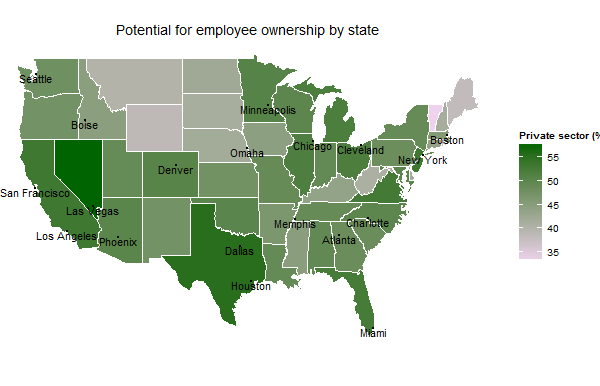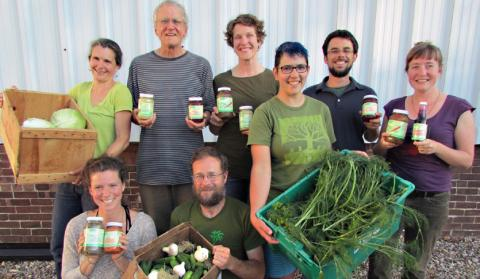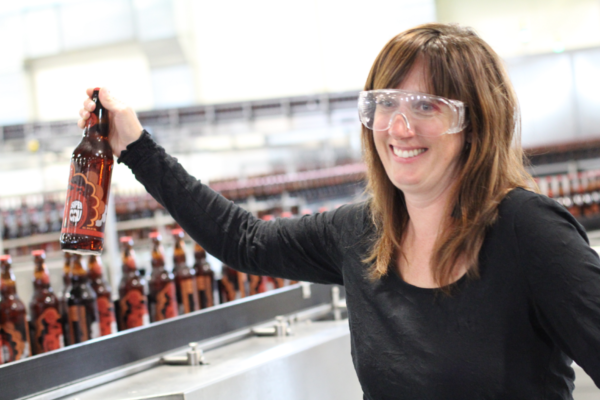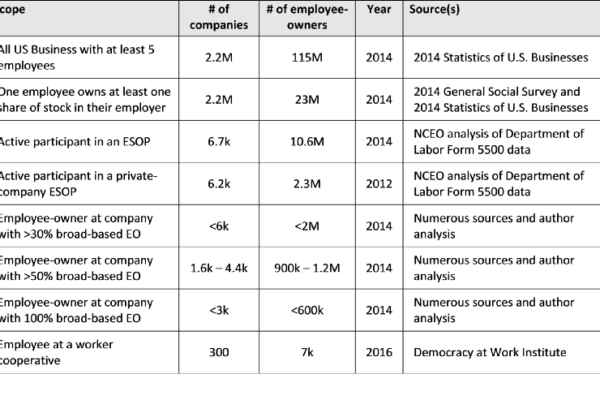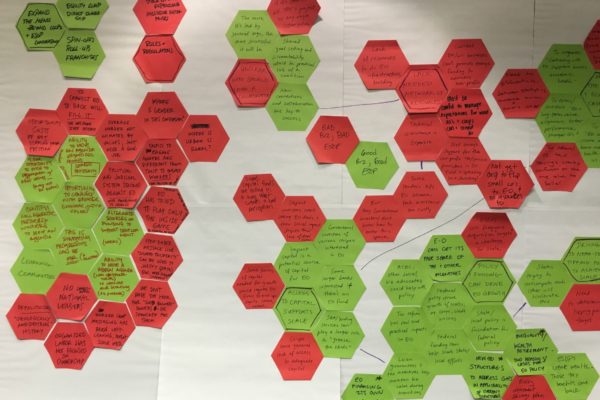by Thomas Dudley For those interested in employee ownership, it is critical to understand if employee ownership can achieve the scale required to truly reduce wealth inequality and create strong local economies. In a previous post, we saw that today there are thousands of employee-owned business operating in every industry and employing up to 2 million Americans. But while […]
Continue Readingtest
Six Lessons in Getting Published
Spreading the world on employee ownership by Majorie Kelly Okay, true confessions: I used to be a weekly columnist for a daily paper. That was on top of my work at that time as publisher of Business Ethics magazine. I’m a journalist at heart, and the daily paper is still the beating heart of journalism, in my […]
Continue ReadingReal Pickles DPO: How Employees Raised Half a Million Dollars to Buy a Business
A Creative Tool For Financing a Worker Cooperative by Erin M. Kesler Real Pickles sold its first jar of organic dills in 2001, when founders Dan Rosenberg and his wife, Addie Rose Holland, decided to turn their pickle-making hobby into a business. By 2015, the business had grown to over than $1 million in revenue. […]
Continue ReadingWhat do Craft Beer and Solar Have in Common?
By Marjorie Kelly, Executive Vice President and Senior Fellow, The Democracy Collaborative When it comes to identifying low-hanging fruit for companies most ready to convert to employee ownership, the “contagion effect” can be a key strategy. One industry where this phenomenon is well known is craft beer, where the trend is poised to get a boost from […]
Continue ReadingFifty by Fifty: Taking Employee Ownership to Scale
by Jessica Rose Jessica Bonanno, Director of Employee Ownership Programs, The Democracy Collaborative and Marjorie Kelly, Executive Vice President and Senior Fellow, The Democracy Collaborative The moment is right for employee business ownership to go to scale. The models are tested and proven, the increasing struggles of American families makes the need apparent, and the […]
Continue ReadingHow Big is America’s Employee-Owned Economy?
by Thomas Dudley Employee ownership (EO) is gaining traction as a way to address a number of social questions including rising wealth inequality, and the best way to create strong local economies As a sign of employee ownership’s increasing importance look no further than Colorado, where Congressman Jared Polis kicked-off his gubernatorial campaign at Save-A-Lot, an employee-owned grocery store. If we […]
Continue ReadingImpact investing and employee ownership
In this Fifty by Fifty research brief, Mary Ann Beyster, president and trustee of the Foundation for Enterprise Development (FED), explores the existing landscape of employee ownership opportunities for impact investors, and highlights emerging models and strategies for inclusive investment in ESOPs and worker cooperatives.
Continue ReadingNew Report: Opportunities for Impact Investing in Employee Ownership
by Erin M. Kesler With income inequality in the United States at record high levels, employee ownership is increasingly being lauded as a potential solution to spreading wealth more broadly. Most recently, research from the National Center for Employee Ownership released in May shows that employee owners have a household net worth that is 92 percent higher than non-employee owners. […]
Continue ReadingHacking the American Dream: Progressive Senators Go Big for Worker Ownership
Jessica Bonanno, Director of Employee Ownership Programs at The Democracy Collaborative The best-kept business model secret of our age is about to get the spotlight it has long deserved. It’s employee ownership — a proven, common-sense pathway to reduce inequality, anchor jobs at home, and rebuild a strong and stable economy, using a vehicle that’s as American […]
Continue ReadingLearning + Design Session
On June 13th and 14th of 2016, we hosted a gathering in Washington, D.C. of key leaders in the national ecosystems of support and advocacy around employee ownership. This report captures the insights and lessons from this strategic convening.
Continue Reading